Whole Spices
Ajwain Seeds (Bishop Seeds) Top
Trachy Spermum Ammi
Family: Umbelliferae
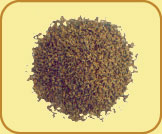
Ajwain probably originated in Egypt and the eastern Mediterranean area. Ajwain has many medicinal uses and is a very old unani medicine. It also has culinary uses especially in India. In the kitchen, ajwain seeds are almost exclusively used in Indian cuisine. They are mainly found in pulse dishes such as dal, as well as vegetable dishes and pickles. The sharp flavour of ajwain has the ability to cut through rich flavours and densely spiced foods.
Bay Leaves (Tej Patta) Top
Cinnamonun Tamala
Family: Lauraceae
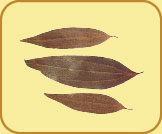
One of the bark spices, Tej Patta is related to cinnamon and cassia, but is considered inferior to true cinnamon. Both the barks and leaves serve culinary purpose of foods and beverages. Tej Patta leaves are often an effective alternative to bay leaves.
Cardamom (Small) Top
Elettaria Cardamomum Maton
Family: Zingilberaceae
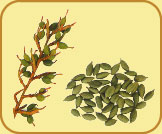
Indian cardamom is offered to the International markets in different grades: 'Alleppey Green Extra Bold' (AGEB), 'Alleppey Green Bold' (AGB), 'Alleppey Green Superior' (AGS) are names that register instant appeal worldwide. Cardamom oil is a precious ingredient in food preparation, perfumery, bakery products, health foods medicines and beverages.
Cardamom (large) Top
Amomum Sublatum Rozburgh
Family: Zingilberaceae
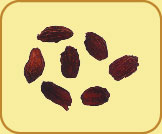
Also referred to as 'black cardamom' large cardamom is indigenous to India. Large cardamon is the dried fruit of a perennial herbaceous plant. Large cardamom is the dried fruit of a perennial herbaceous plant. The fruit is almost the size of nutmeg. It is a less expensive and reasonably efficient substitute for the green variety.
Black Pepper Top
Piper Nigrum
Family: Piperaceae
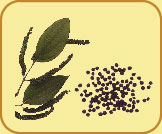
Indian pepper had a profound influence on the European economy of the middle Ages. Many western countries owed their prosperity to this spice which fetched them a very high price. Two of the most celebrated varieties if Indian black pepper are 'Malabar Garbled ' and 'Tellicherry Extra Bold'.
Celery Seeds Top
Apium Graveolens
Family: Umbelliferae
The dried of a perennial herbaceous plant, celery seed has a pleasingly crisp texture and subtle flavour. The odour of the green stalk and leaves is distinctly different from that of the seed, which has a characteristic warm and slightly bitter taste. Celery seeds are widely used in foods, beverages, drugs and perfumery.
Chillies Top
Capsicum Annuum Capsicum Frutescens
Family: Solanaceae
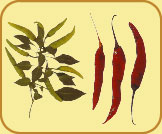
Though, at one time, America's most important contribution to the world of spices, chilli is today one of India's major export attractions. An annual sub-herb, chilli comes in a wide variety of shapes, sizes colours and in different degrees of pungency.
Coriander Seeds Top
Coriandrum Sataivum
Family: Umbelliferae
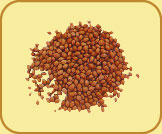
A native of the Mediterranean, coriander is the dried ripe fruit of an annual herb with several branches and serrated leaves. During the middle ages, coriander is believed to have been used in love potions. The great Arabian classic ' Thousand and One Nights' often refers to this spice as aphrodisiac.
Cumin Seeds Top
Cuminum Cyminum
Family: Umbelliferae
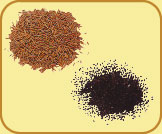
The dried fruit of a small herbaceous plant, cumin was quite popular even during the Biblical times as an efficient digestive and as a food flavour for ceremonial feasting. Though native to Egypt and the Mediterranean, cumin is now mostly produced in India.
Dill Seeds Top
Anethum Graveolens
Family: Umbelliferae
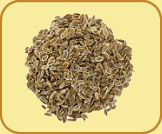
Dill is the dried fruit of an annual herb of the parsley family. It has a distinctive but mild caraway-like flavour. A winter crop, dill requires a well-drained, sandy soil with full exposure to sunlight.
Dry Ginger Top
Zingiber Officinale Rose
Family: Zingiberaceae

One of the earliest oriental spices known in Europe, ginger has been cultivated in India both as a fresh vegetable and marketed as a dried spice since time immemorial. The fresh, dried or powdered rhizome of a slende, perennial herb, Indian ginger has been acclaimed worldwide for its characteristic taste, flavour & texture.
Fenugreek Seeds (Kasuri Methi) Top
Trigonella Foenum-Graecum
Family: Leguminosae
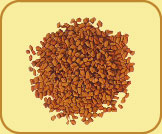
Fenugreek is one of the earliest spices known to man. Ancient Egyptians used it as a food, medicine and an embalming agent. To the Romans was a cattle feed as well. The ripe, dried fruit of a quick-growing annual leguminous herb, fenugreek has a strong, pleasant and quite peculiar odour reminiscent of maple.
Garlic Top
Allium Sativum
Family: Alliaceae

A native of Europe and central Asia. Garlic was well-known to ancient Egyptians way back in 2600 BC. Along with onion, garlic was fed to thousands of tired and famished workers engaged in the gruelling task o building the great pyramid of cheops.
Kokam Black (Wet) Top
Garcinaindica Choisy
Family: Guttiferae
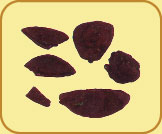
Kokam is an Indian spice speciality, with an agreeable flavour and sweet, acidic taste. By both culinary and medical standards, kokam ranks high. Indian kokam is a versatile spice. Its oils, seeds, fruits, bark and the young leaves are all of extensive culinary and therapeutic value.
Tamarind Top
Tamarindus Indica
Family: Caesalpiniaceae
The fruit of a tropical tree, tamarind is an indispensable spice in most Indian kitchens. Today, India is the only producer of tamarind on a commercial scale.
Turmeric Top
Curicuma Longa
Family: Zingiberaceae
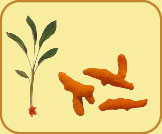
The dried rhizme of a herbaceous perennial, turmeric is closely related to ginger. The spice is also sometimes called 'Indian Saffron' thanks to its brilliant yellow colour. Indian turmeric has been known to the world since ancient times.